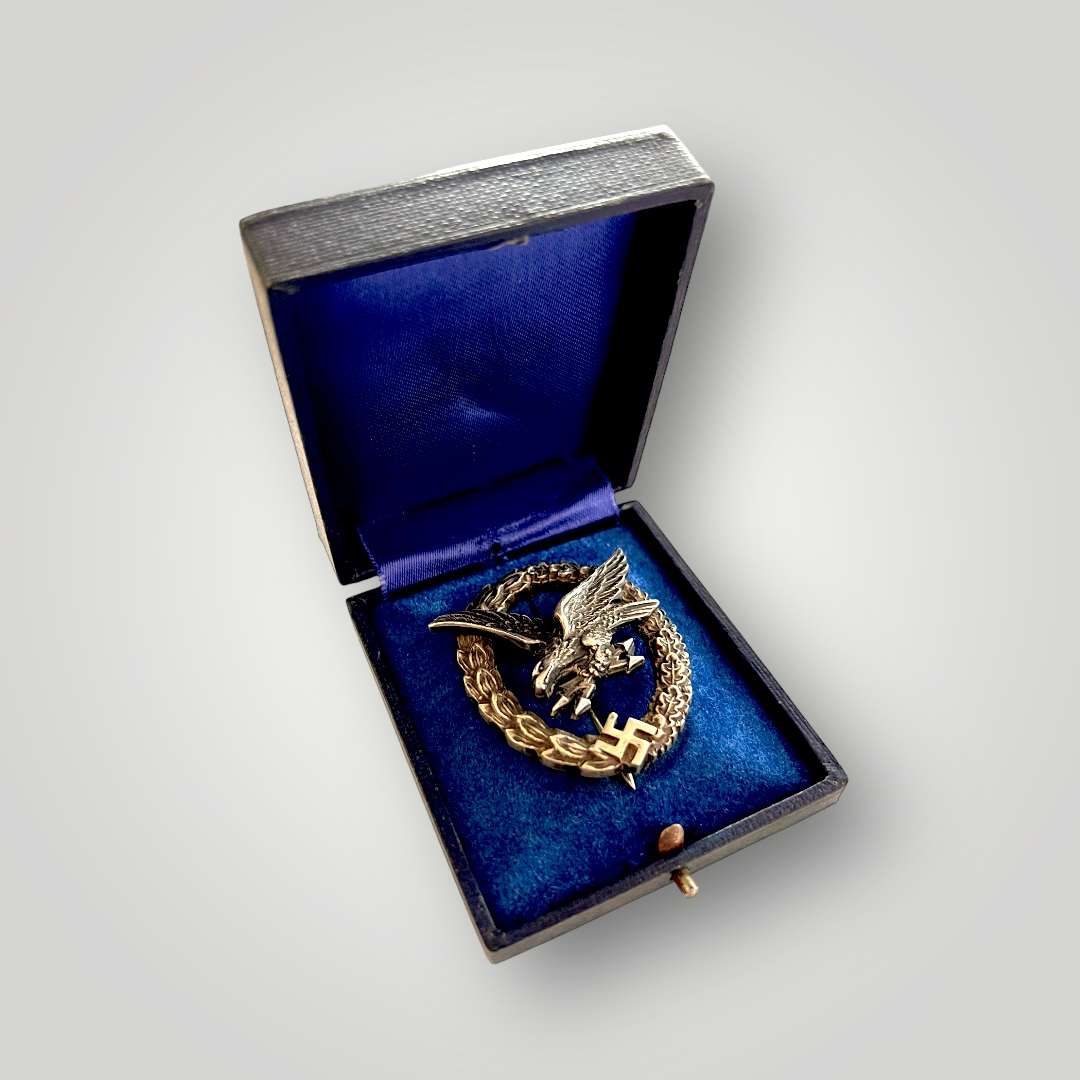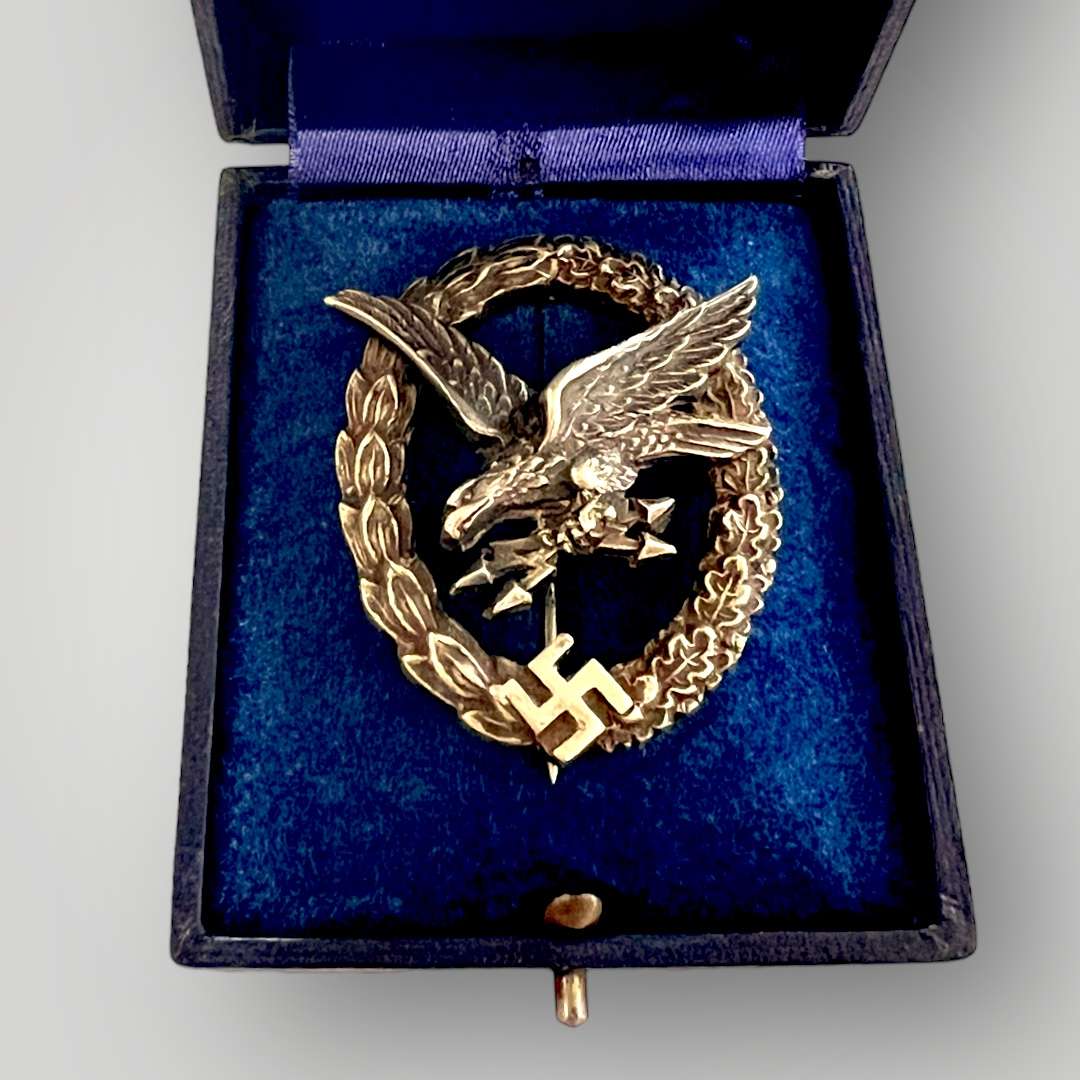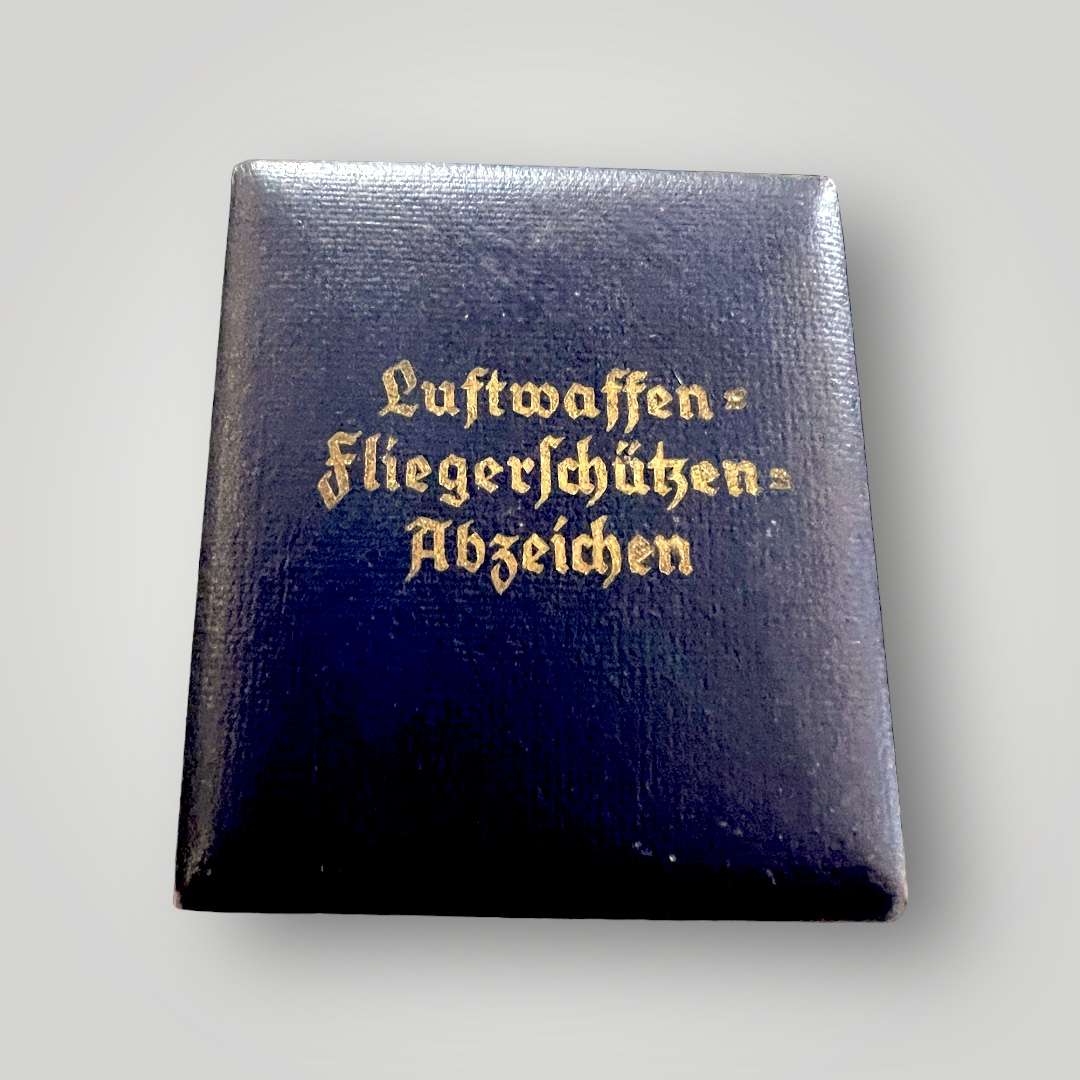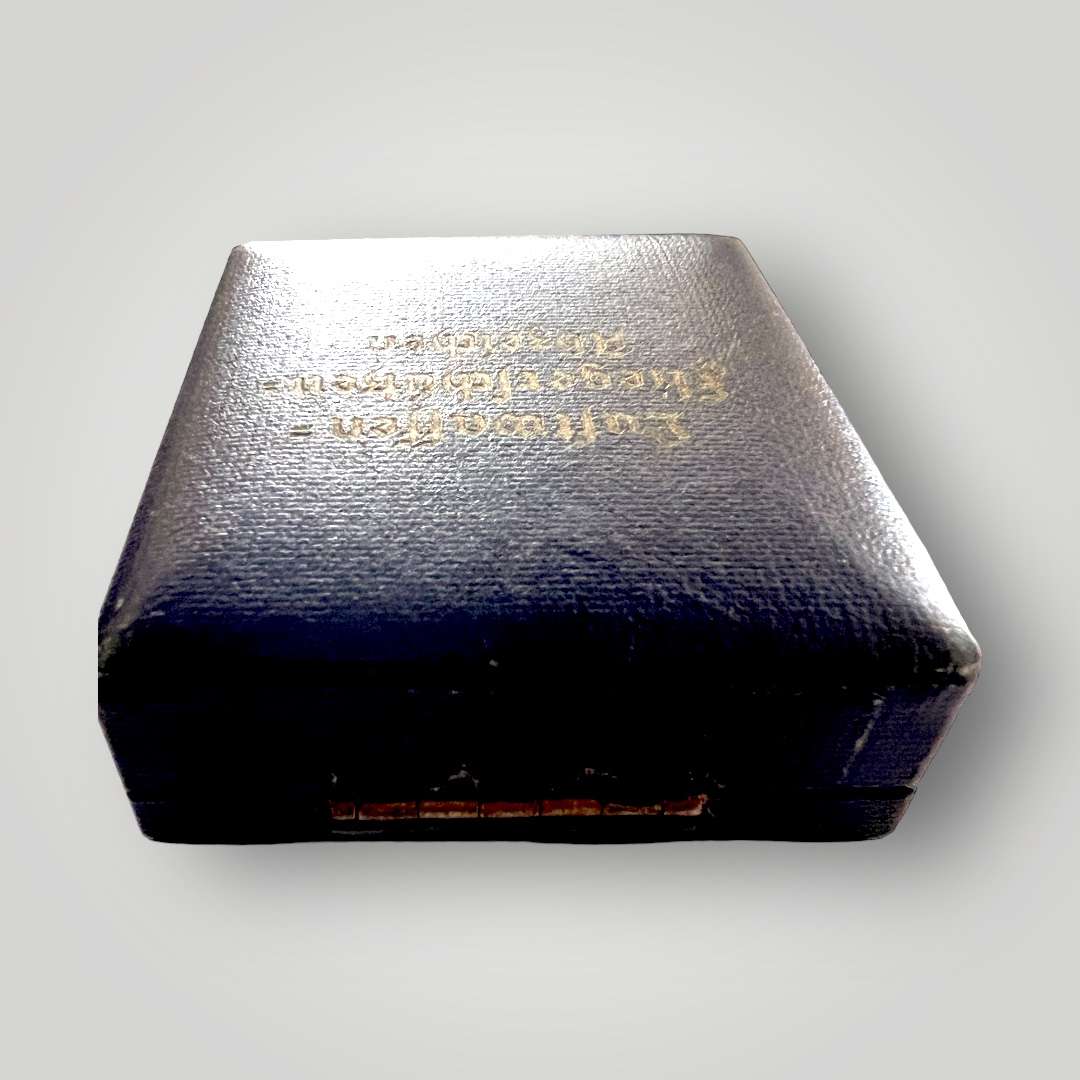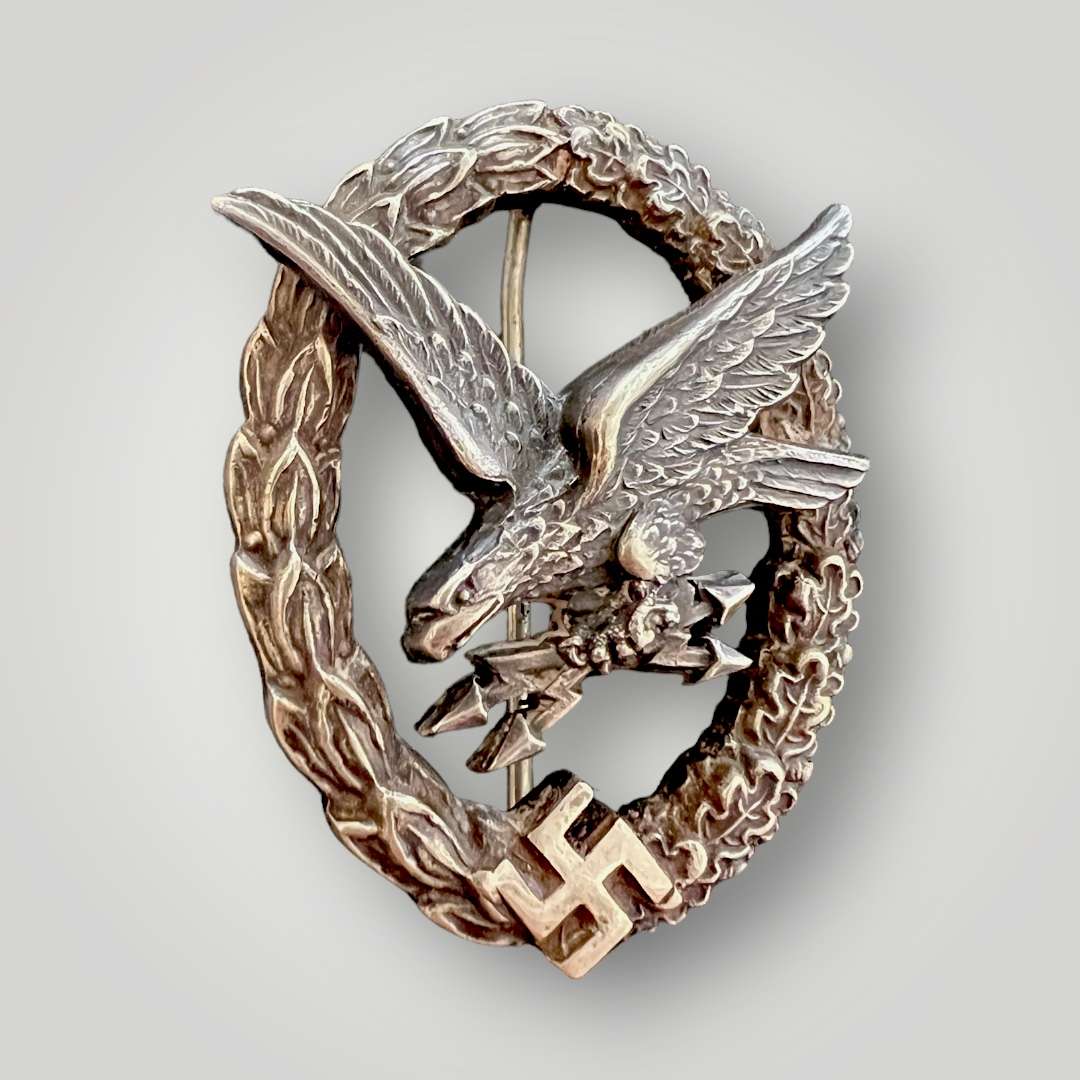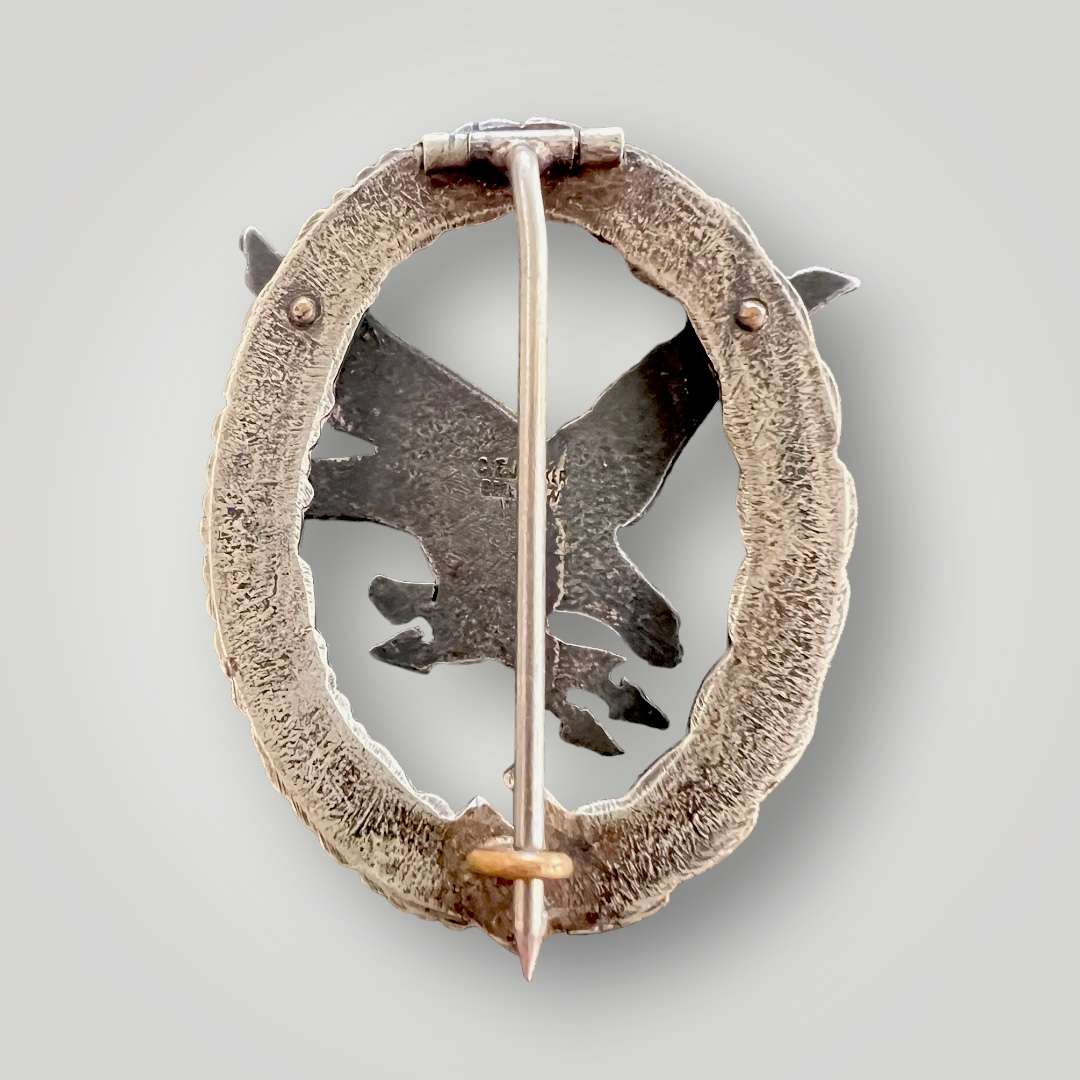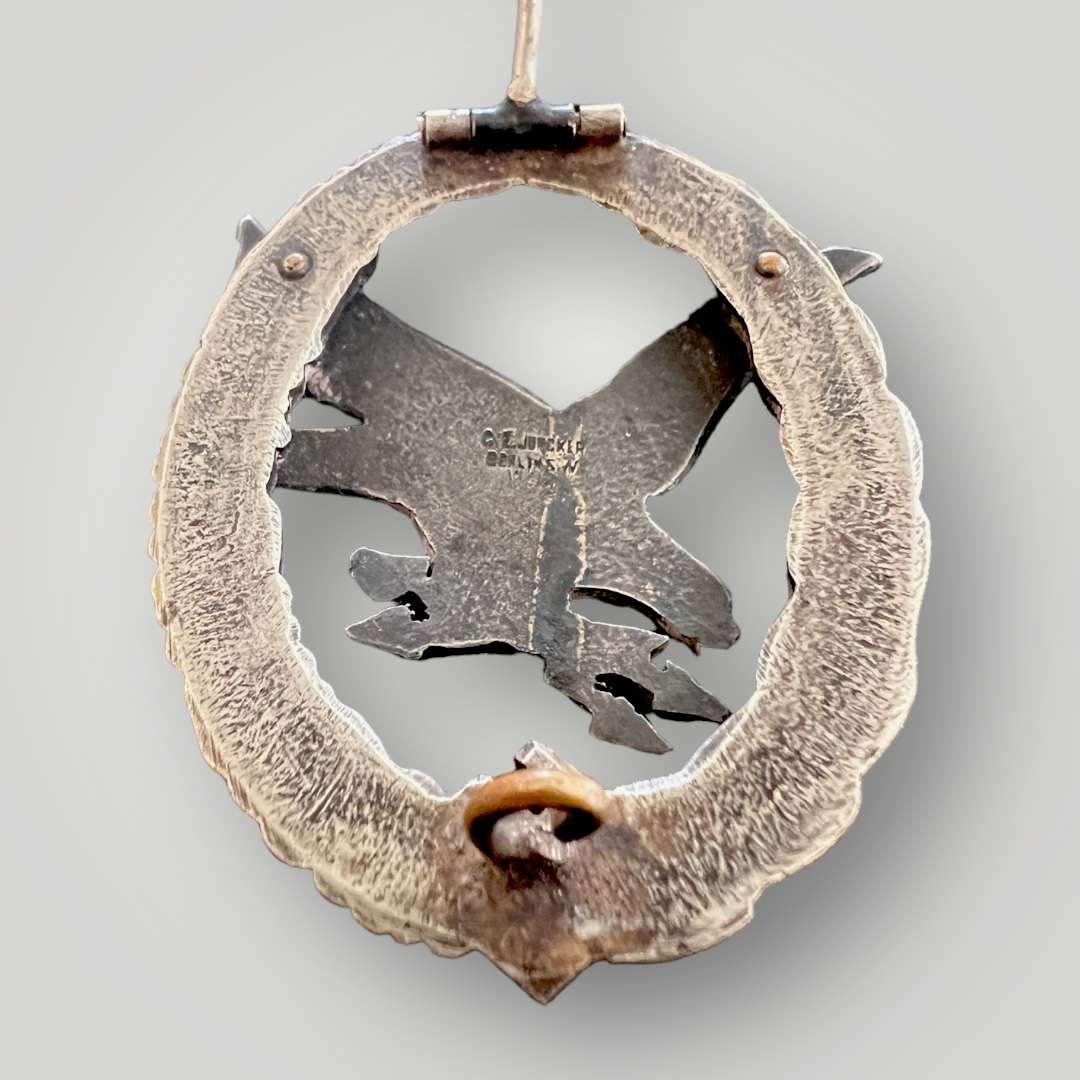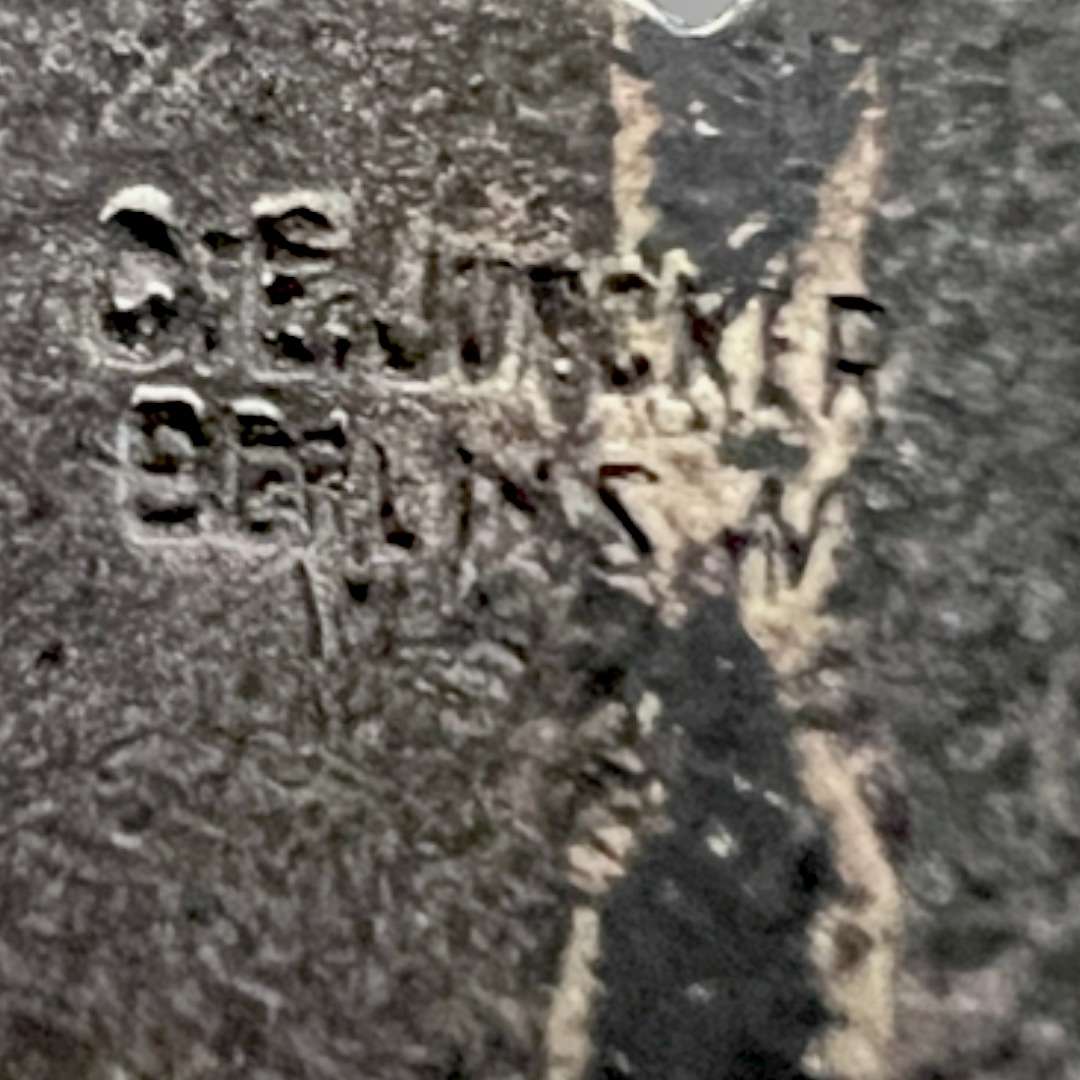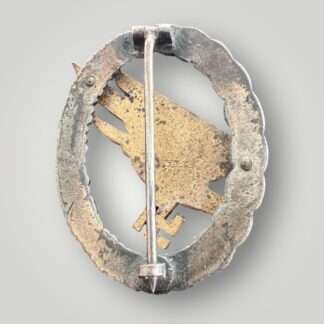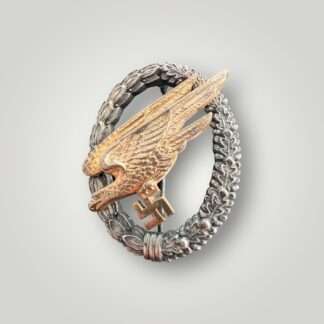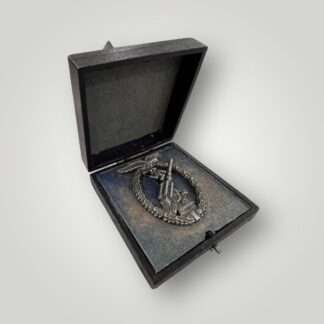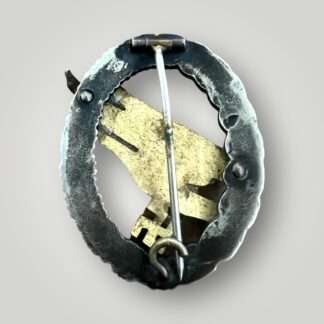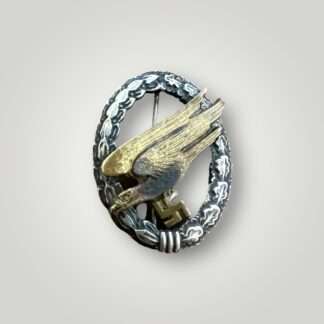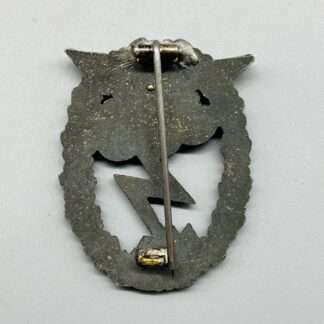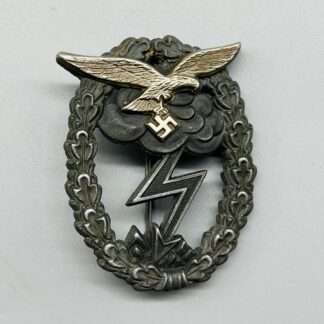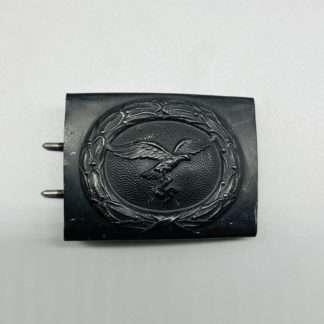Description
Luftwaffe Radio Operator & Air Gunner Badge
The Radio Operator & Air Gunner’s Badge (Fliegerschützenabzeichen für Bordfunker) is a commonly accepted title for the Luftwaffe-Fliegerschützen-Bordfunker-und Bordmechanikerabzeichen (Combined Air Gunner, Radio Operator, and Flight Engineer Badge). It was a German military decoration awarded to radio operators, air gunners, mechanics, and flight engineers who were serving members of the Luftwaffe, who completed two months of training or five operational flights.
The badge was instituted in 1935, which was worn on the lower part of the left breast side of the tunic, below the Iron Cross. The badge was oval in shape and had a silver-plated outside wreath around the rim. The middle of the wreath had a national eagle “flying from left to right in a downwards direction”; clutched in its claws were two crossed arrow-head lightning bolts. The polished eagle was also silver-plated but made of “oxidized old-silver” giving it a different shade of color than the polished wreath. The right side of the wreath was composed of laurel leaves and the left side of oak leaves, with a Swastika beneath. The badge was originally made of aluminum, however, in the latter stages of the war it was made from metal alloy.


